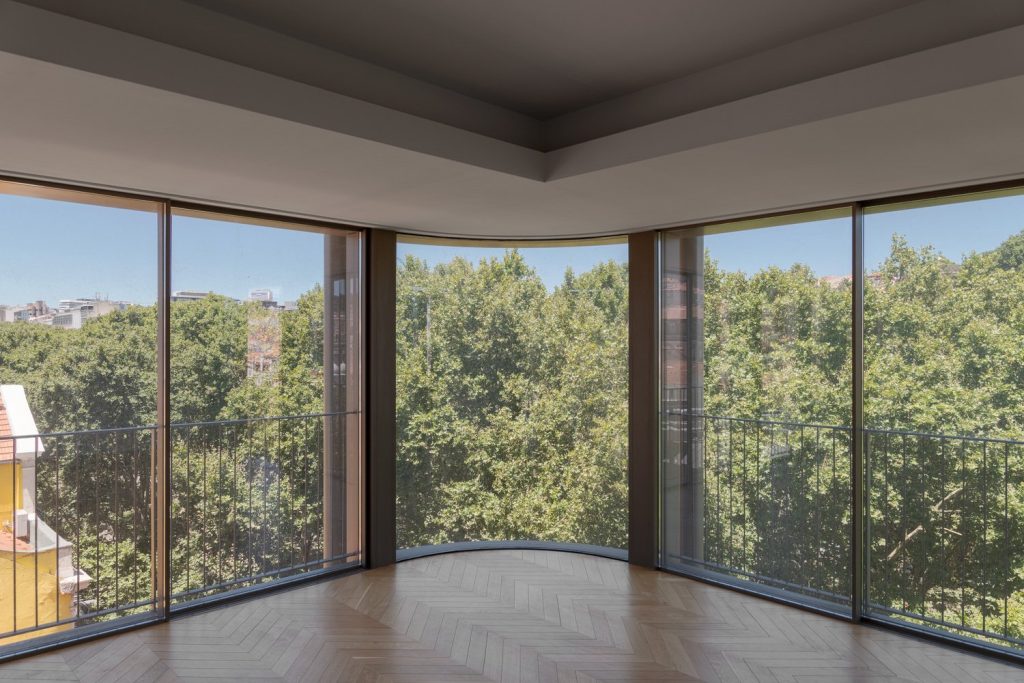Located in Lisbon’s most prestigious and attractive boulevard, the Liberdade Building 49 holds particular importance in OTIIMA’s rehabilitation project portfolio. The project is signed by the renowned architect Ana Costa and the distinguished real estate company Prime Portugal. This collaboration gave birth to a timeless and sophisticated project. The intervention returned the building to residential use, thus resuming the initial vocation of this Avenue in the center of Lisbon. This change in use from offices to housing necessitated modifying the façade to align with the new purpose.

Edifício Liberdade 49 | Ana Costa Arquitetura | © Ricardo Oliveira Alves
Innovative Spaces
A completely re-skimmed façade, large bay windows, and gold reflective panels lend the building an iconic and distinctive new look. The existing office building, designed by the Risco Architecture Office, utilized a system of metrics and proportions derived from the adjacent buildings (dating back to the end of the 19th century), to which a new “layer” was added. This alteration project was based on the principle of adding a new thickness to the façade, which would enable the creation of balcony openings and a system of reliefs and shadows that echoed the themes of the stonework.

Edifício Liberdade 49 | Ana Costa Arquitetura | © Ricardo Oliveira Alves
Community Impact
Avenida da Liberdade, not only because of its scale but also because of its importance in the development of the city of Lisbon, was the scene of interventions of great architectural quality, which, despite being assumed to be something completely new, always established a dialogue with the city. The application of the OTIIMA PLUS System was thus the perfect solution to strike a balance between the privacy of living spaces and the creation of outdoor spaces that are as generous as possible.
Edifício Liberdade 49 | Ana Costa Arquitetura | © Ricardo Oliveira Alves
The existing cantilever, approximately 25 cm in depth at the first-floor level, was leveraged to gain depth and align with the façade of the adjacent building to the south. Thus, a new “skin” was added using new materials and construction systems with different plastic characteristics, guaranteeing the necessary thermal and acoustic comfort.
